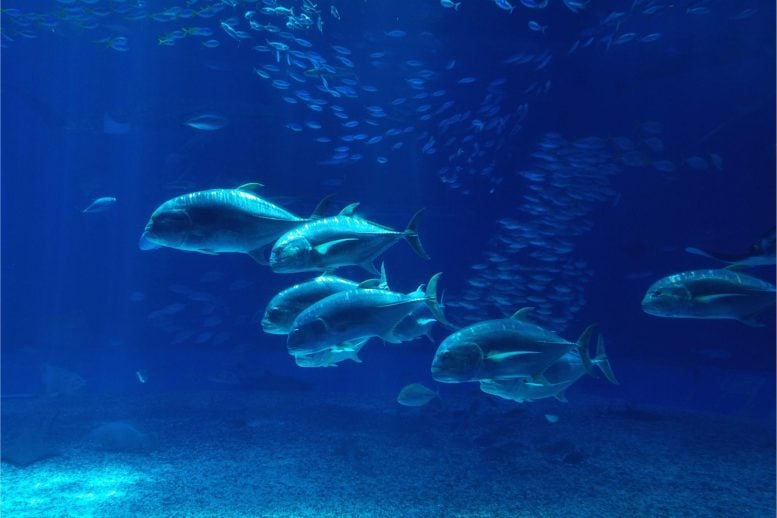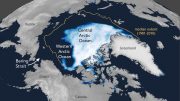
Mesopelagic fishes are an important element of marine food webs, a huge, still mostly untapped food resource, and great contributors to the biological carbon pump, whose future under climate change scenarios is unknown.
According to a new study conducted by the ICM-CSIC, ocean warming will likely lead to smaller fish in the deep sea. This conclusion was reached through the analysis of fish otoliths found in geological formations dating back 700-800 thousand years.
A study led by the University of Vienna, with participation from the Institut de Ciències del Mar (ICM-CSIC), has found that fish living in the dark depths of the ocean (below 200 meters in the water column) will likely shrink in size due to climate warming, which could have significant ecological consequences.
The findings of this research have been published in the journal Proceedings of the Royal Society B: Biological Sciences. For its preparation, the authors obtained fish otoliths, which are small stones in the inner ear of bony fish used for sound and balance perception, from 800-700 thousand-year-old sedimentary formations on the island of Rhodes in the Aegean Sea. They then analyzed the otoliths to monitor changes in fish body size throughout glacial and interglacial periods.
The morphology of these structures is particular to each fish species and their size directly reflects the size of the fish individual they come from, which allows researchers to identify them in order to reconstruct past fish faunas.
“Thanks to the otolith analysis we have found that fishes during the interglacial period were smaller in size by 35%, when the global temperature had increased by 4 °C, which could happen again nowadays due to the ocean warming”, explains the leading author of the study, Konstantina Agiadi, from the University of Vienna.
Small fishes, big impacts
The study, that is one of the few works that have so far addressed the consequences of climate warming on the deeper part of the oceans, the mesopelagic zone (200–1000 m depth), focused on the changes in “lanternfishes”, a group of small mesopelagic fishes that are named for their capacity to produce their own light.
“Knowing the response of these organisms to ocean warming is key, since they contribute to ecosystem stability, reduce atmospheric carbon dioxide, and are a huge food resource for other organisms in the marine food web”, explains the ICM-CSIC researcher and co-author of the study Marta Coll, who adds that “these fish make up more than half the fish biomass in the deep sea, and about 100 times more than the total global annual fishery catches”.
Lately, lanternfishes are important contributors to the biological carbon pump, a natural mechanism for reducing atmospheric carbon dioxide (CO2). Initially, phytoplanktonic organisms absorb CO2 from the atmosphere through photosynthesis. Then, every night, lanternfishes travel hundreds of meters upward to the surface of the oceans and return to the mesopelagic zone, thus bringing huge amounts of carbon from the surface to the deep ocean.
Reference: “Palaeontological evidence for community-level decrease in mesopelagic fish size during Pleistocene climate warming in the eastern Mediterranean” by Konstantina Agiadi, Frédéric Quillévéré, Rafał Nawrot, Theo Sommeville, Marta Coll, Efterpi Koskeridou, Jan Fietzke and Martin Zuschin, 11 January 2023, Proceedings of the Royal Society B: Biological Sciences.
DOI: 10.1098/rspb.2022.1994









From the Discussion section of the source article: “Present-day anthropogenic climate change is unprecedented, and therefore its effects are not directly comparable to those of past climate change.” This assertion is presented without citation or evidence to support it.
This is a problematic claim because our history of past climates is based on proxies obtained from sedimentary or lithified sediment samples. As a rule of thumb, the farther back in time one goes, the less certain one is of the true date, and the precision of measurement declines. Also, temperature proxies experience low-pass filtering, especially with low rates of sedimentation, but generally due to diffusion and dilution of the proxy concentration. Thus, the calculation (or plotting) of the slope of temperature change with respect to time has increasing uncertainty.